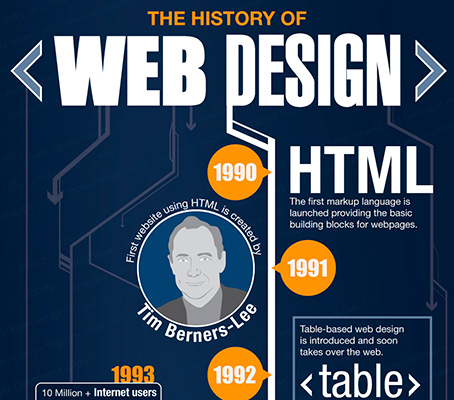Fascinated In Learning Exactly How Internet Site Style Has Changed Over The Years? Discover The Development From Standard, Simple Styles To User-Centered Approaches That Focus On The Demands And Preferences Of On-Line Visitors
Fascinated In Learning Exactly How Internet Site Style Has Changed Over The Years? Discover The Development From Standard, Simple Styles To User-Centered Approaches That Focus On The Demands And Preferences Of On-Line Visitors
Blog Article
Short Article Writer-Jonasson Dodson
In the past, websites were easy and focused on information. Navigation was direct, and layout was for desktops. Now, user experience is crucial. Data guides styles for simple navigation. Receptive formats match various tools. Today, dark setting minimizes pressure, and minimal food selections improve navigating. Interactive functions engage individuals, and vibrant visuals attract attention. AI integration improves involvement. See how design has actually developed to improve your on-line journey.
Early Days of Website Design
In the early days of website design, simplicity preponderated. Internet sites were standard, with minimal colors, font styles, and layouts. The emphasis got on offering details instead of flashy visuals. Customers accessed the net with slow-moving dial-up links, so rate and performance were key.
Navigation food selections were straightforward, generally situated at the top or side of the page. Internet sites were created for desktop, as mobile surfing had not been yet prevalent. Material was king, and designers prioritized easy readability over complex design components.
HTML was the key coding language utilized, and designers had to function within its restraints. Animations and interactive functions were marginal compared to today's requirements. Sites were static, with little vibrant content or customized individual experiences.
Increase of User-Focused Design
With the advancement of site layout, a shift in the direction of user-focused layout concepts has actually come to be significantly prominent. Today, developing websites that prioritize customer experience is important for involving site visitors and attaining company objectives. User-focused layout includes comprehending the requirements, preferences, and behaviors of your target market to customize the site's layout, content, and includes appropriately.
Designers now carry out comprehensive research, such as customer studies and usability testing, to collect insights and feedback directly from customers. This data-driven strategy assists in producing intuitive navigating, clear calls-to-action, and visually enticing interfaces that reverberate with site visitors. By positioning the individual at the facility of the layout procedure, websites can supply a more individualized and satisfying experience.
Receptive style has actually also emerged as a key aspect of user-focused design, making certain that web sites are maximized for different devices and screen dimensions. This versatility improves availability and use, catering to the varied means individuals engage with internet sites today. In essence, the rise of user-focused style symbolizes a change towards creating digital experiences that prioritize the demands and expectations of the end user.
Modern Trends in Website Design
Discover the most recent fads shaping website design today. One prominent trend is dark setting style, using a sleek and modern appearance while decreasing eye pressure in low-light settings. An additional vital fad is minimalist navigating, simplifying food selections and boosting user experience by focusing on essential elements. Including micro-interactions, such as animated buttons or scrolling results, can develop an extra engaging and interactive web site. Receptive layout stays important, ensuring seamless customer experiences across numerous tools. Additionally, making use of vibrant typography and asymmetrical layouts can include aesthetic passion and accentuate particular web content.
Integrating AI modern technology, like chatbots for customer support or individualized referrals, enhances user engagement and simplifies procedures. Access has likewise end up being a substantial pattern, with developers focusing on comprehensive style techniques to satisfy varied customer needs. Welcoming local seo specialist by optimizing web site efficiency for rate and efficiency is another arising pattern in web design. Teaming up with user responses and data analytics to repeat and improve layout continuously is crucial for remaining relevant in the ever-evolving electronic landscape. By accepting these modern trends, you can create an aesthetically enticing, user-friendly website that resonates with your target market.
cost of website development
As you assess the advancement of website style from the early days to now, you can see just how user-focused style has ended up being the driving pressure behind modern trends.
Embrace the journey of adjustment and adaptation in web design, always maintaining the customer experience at the forefront.
Stay existing with the current trends and technologies, and never ever stop developing your strategy to create visually spectacular and straightforward internet sites.
Evolve, adjust, and create - the future of website design remains in your hands.
